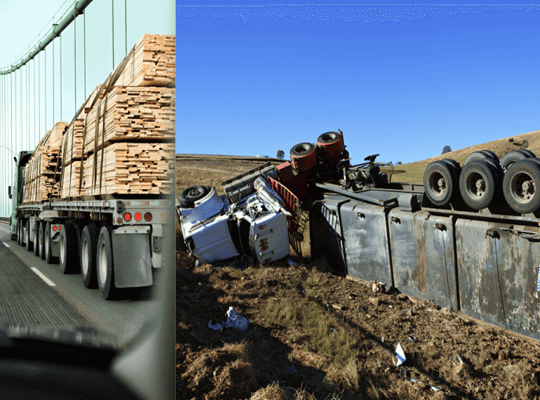The Camp Lejeune water contamination tragedy stands as one of the most significant environmental disasters in U.S. military history. Between 1953 and 1987, millions of individuals, including military personnel, civilian workers, and their families, were exposed to toxic chemicals in the camp’s water.
In response to this crisis, a wave of litigation has emerged, seeking justice and compensation for those affected. In this article, we will offer a comprehensive analysis of the current state and future outlook of Camp Lejeune litigation.
The History of Camp Lejeune Contamination
The discovery of toxic chemicals in Camp Lejeune’s water supply in 1982 marked the beginning of a prolonged environmental crisis. ConsumerNotice.org notes that from 1953 to 1987, millions of individuals were exposed to contaminants such as trichloroethylene, perchloroethylene, benzene, and vinyl chloride.
These chemicals, originating from activities at the base’s water treatment plants, posed significant health risks to those who were exposed to the contaminated water.
The contamination affected not only military personnel but also civilian workers and their families who resided on the base. The gravity of the situation became evident as health issues ranging from neurological problems to cancer surfaced among those exposed. The extent of the contamination and its prolonged duration underscored the magnitude of the environmental oversight that occurred at Camp Lejeune.
The Camp Lejeune Justice Act of 2022
According to VA News, President Joe Biden signed the Camp Lejeune Justice Act into law in August 2022. It was aimed at providing a chance for victims of Camp Lejeune to seek compensation for the illnesses they suffered due to the exposure.
According to TorHoerman Law, the passage of the Camp Lejeune Justice Act represented a significant milestone in addressing the ramifications of the contamination.
With the enactment of this law, claimants gained a legal pathway to pursue lawsuits against the U.S. government. The Act established procedures for filing claims, addressing the need for redress and accountability in Camp Lejeune litigation.
Current Litigation Landscape
As of December 2023, approximately 1,419 Camp Lejeune lawsuits are pending in the Eastern District of North Carolina. Since the enactment of the CLJA, the litigation landscape has seen significant activity. As noted by the United States Department of Justice, over 93,000 claims have been filed under the CLJA.
This surge in claims underscores the growing momentum of Camp Lejeune litigation and the increasing number of individuals seeking redress for their injuries. Despite the challenges and delays inherent in mass tort litigation, the pursuit of justice for Camp Lejeune victims remains steadfast.
Challenges and Obstacles
While Camp Lejeune litigation progresses, several challenges and obstacles impede the path to resolution for claimants. The sheer volume of cases, coupled with the complexity of proving causation between exposure to contaminated water and subsequent illnesses, presents a formidable hurdle.
Furthermore, bureaucratic delays and the denial of responsibility by the Navy and Marine Corps have hampered the timely adjudication of claims. Evidentiary issues, including obtaining medical records and establishing a clear link between exposure and illness, pose additional challenges for claimants.
Moreover, the protracted nature of legal proceedings and the emotional toll on plaintiffs further compound the difficulties faced in Camp Lejeune litigation. Despite these obstacles, the resilience of claimants and their legal representatives underscores the determination to seek accountability and compensation.
Resolving Claims With Settlements
Settlements play a pivotal role in Camp Lejeune litigation, offering a means of resolution for claimants while mitigating the burden of protracted legal proceedings. Despite the absence of publicly announced settlement amounts, experts estimate the potential minimum settlement to be $10 million. Some claims projected that the settlements will cost the government over $163 billion over a decade.
Lawsuits present a complex array of injuries, ranging from cancer to neurological disorders, necessitating individualized approaches to Camp Lejeune settlement negotiations. Factors influencing settlement outcomes include the severity of injuries, the strength of evidence, and the financial resources of defendants.
Future Prospects and Emerging Trends
Looking ahead, Camp Lejeune litigation is poised to enter a new phase characterized by evolving legal strategies and emerging trends. As the number of lawsuits continues to grow, key developments in case law and precedent-setting rulings are expected to shape the trajectory of litigation.
Additionally, advancements in scientific research and epidemiological studies may provide further insight into the causal relationship between contamination exposure and health outcomes. Anticipated trends include an increased focus on multidistrict litigation consolidation to streamline proceedings and expedite resolution.
Furthermore, the involvement of expert witnesses and the utilization of cutting-edge technologies in evidence presentation may influence case outcomes. While challenges persist, the evolving landscape of Camp Lejeune litigation offers hope for meaningful progress and justice for those affected by the contamination.
Also read: The Damages You Can Seek in a Suboxone Tooth Decay Lawsuit
FAQs
How much compensation is available for Camp Lejeune victims?
Compensation for Camp Lejeune victims varies depending on factors such as the severity of health impacts, legal proceedings, and individual case circumstances. Settlement amounts, if any, are determined through legal negotiations, and there is no fixed sum available for all victims.
How many people were exposed to Camp Lejeune water?
It’s estimated that millions of people, including military personnel, their families, and civilian workers, were exposed to contaminated water at Camp Lejeune. This widespread exposure led to significant health risks and long-term consequences for many individuals.
How long does Camp Lejeune payout take?
The duration of Camp Lejeune payout processes varies widely, depending on factors such as legal proceedings, settlement negotiations, and individual case complexities. Some claimants may receive compensation relatively quickly, while others may experience delays due to various factors within the legal system.
In conclusion, the Camp Lejeune litigation, marked by its magnitude and complexity, reflects a pivotal chapter in environmental justice and accountability. Despite hurdles such as bureaucratic delays and evidentiary challenges, the Camp Lejeune Justice Act signifies a crucial step forward in providing recourse for victims.
Settlements, though intricate, offer avenues for resolution amid diverse injuries and legal strategies. Looking ahead, the evolving landscape, buoyed by emerging trends and scientific advancements, holds promise for meaningful progress. Through unwavering determination, the pursuit of justice continues, offering hope for redress and closure to those impacted by this enduring tragedy.








